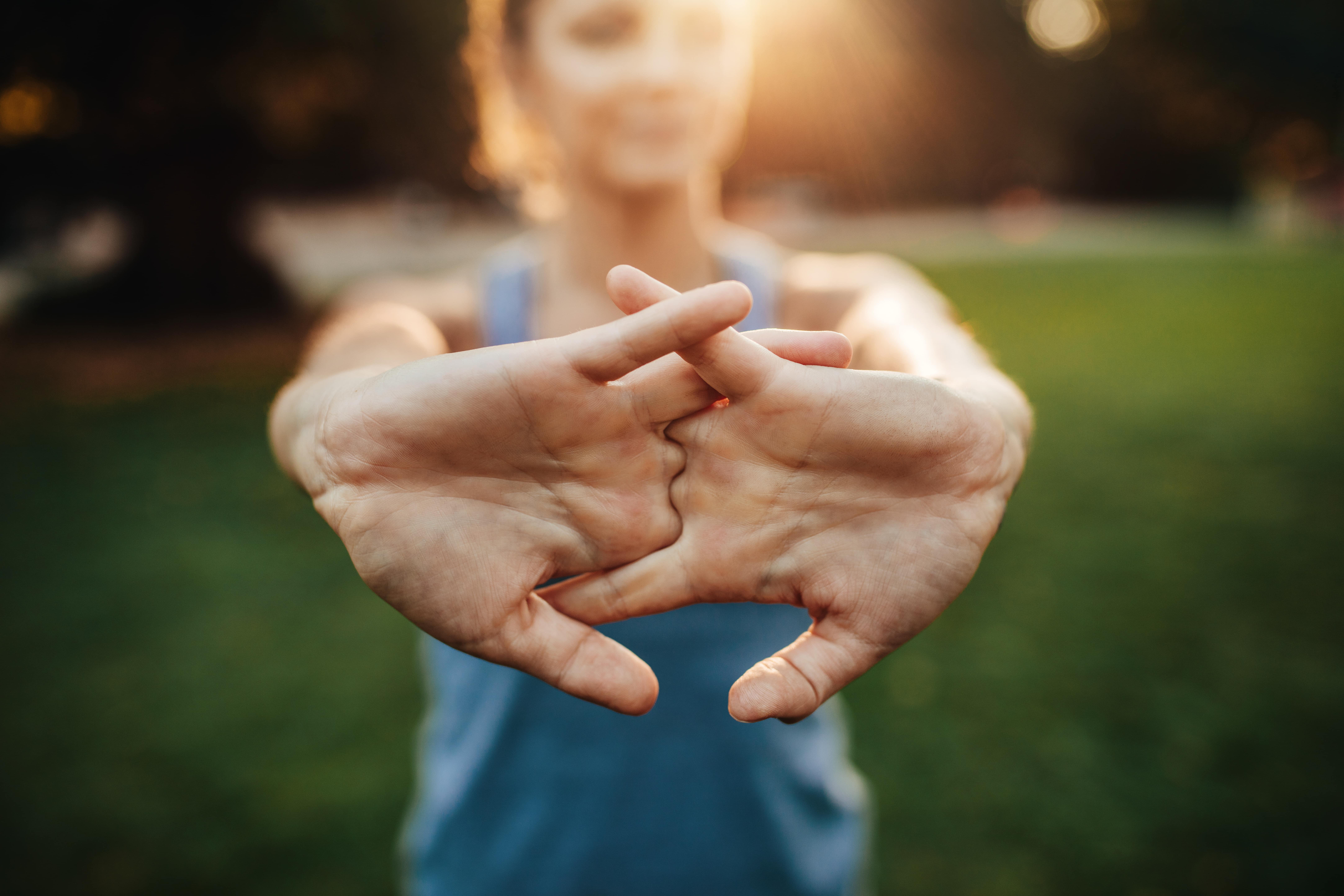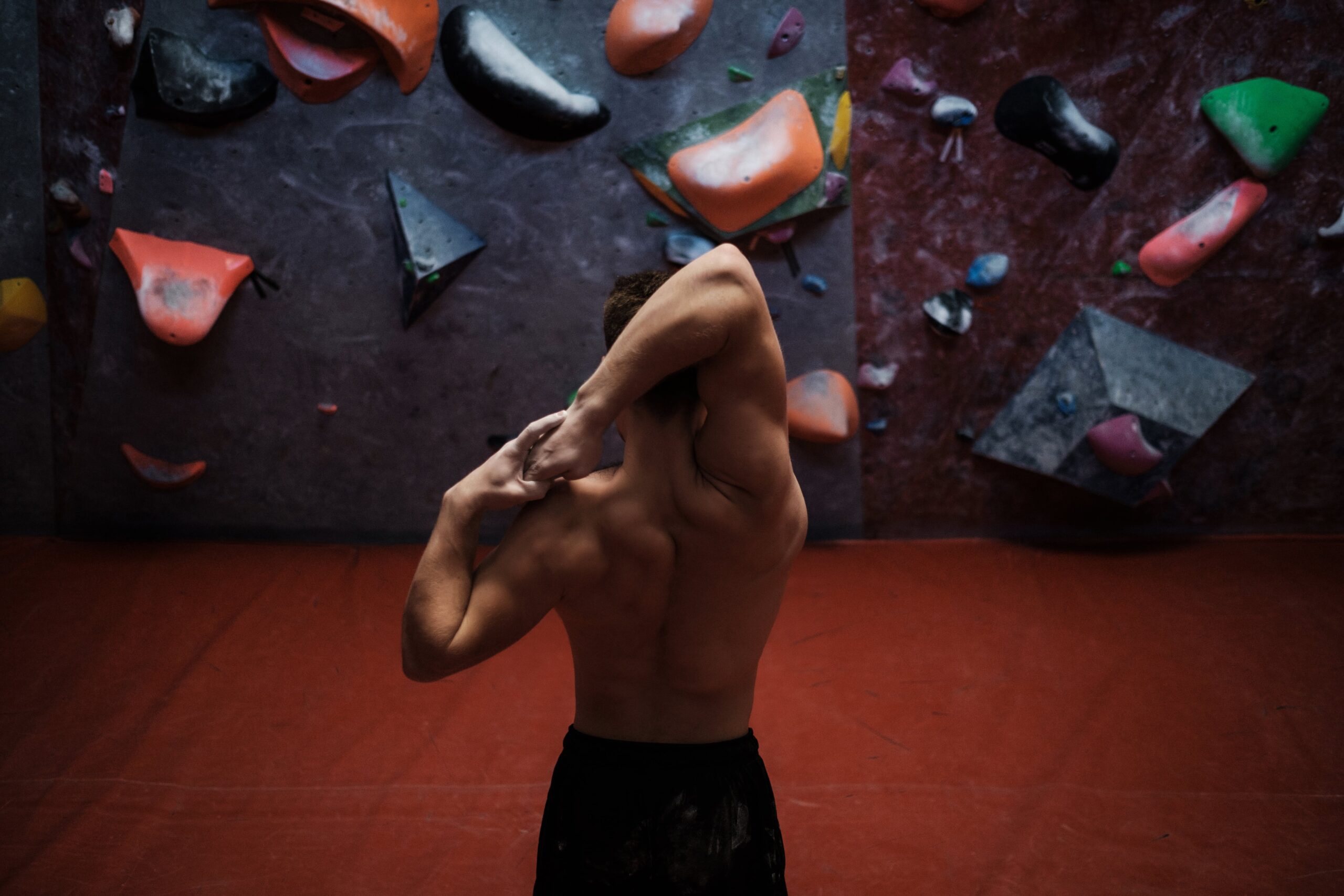07775 853 348


I could give you the same intro as the previous article on the importance of antagonist training . But will save you the headache. In this article I will talk about the importance of stretching and flexibility in climbing. This can be related to other sports too, but as I am a climber, I will be writing from my experience.
This is what I have learnt through my years of coping with climbing injuries.
When we exercise muscles, these can become tight. Tight muscles limit our range of movement and its proper muscle action. If a muscle cannot contract and relax efficiently, this will result in decreased performance, and a lack of muscle movement control. Short, tight muscles also cause dramatic loss of strength and power during physical activity. In some cases, tight muscles can restrict blood circulation, which is needed for muscle repair; blood carries oxygen and nutrients.
If some muscles become too tight, and they limit ourrange of motion, the body will try and compensate by either using other muscles in a process that could be damaging to the body long term. Or the wrong muscle(s) is/are being used for a particular action, and may very quickly be overloaded. Or force our bodies in a less than ideal position, creating damage to our muscles or tendons because of bad alignment.
Climbers are very guilty of not stretching after climbing, or building a stretching routine in their training plan/schedule. We complete repetitive movement all the time. We know stretching is beneficial, but we find it boring, or it may eat into our climbing time.
By increasing the length of a muscle, a general reduction in muscle tension is achieved, hence an improved range of movement. By increasing the range of movement), the risk of damage occurring to muscles or tendons is reduced, hence a greater abilityto move freely.

Stretching after exercise, as part of a cool down, helps lengthen the individual muscle fibers, increase blood circulation, and remove waste products (such as lactate).
Another reason, is that increased flexibility can help prevent the effects of fatigue by taking the pressure of the working muscles (agonists). For every muscle action in the body, there is an opposing muscle (antagonist). If the opposing muscle is more flexible, the working muscle has to exert less force to work efficiently (exactly like using a resistance band, the more flexible this band, theless effort required to stretch it).
Other benefits include improved posture, improved energy levels, improved relaxation and stress relief, improved coordination, etc…
It is a form of active relaxation that can improve both mental and physical recovery.
Stretch after climbing, make sure you are warm, and haven’t cooled down. Or warm up again, doing some light aerobic movements.
If you are a regular climber, also think about maybe doing some specific stretching training in between sessions.
Join a Pilates or Yoga class. Why do so many people profess by yoga.
Watch youtube videos with stretch routines specifically for climbers
Buy a book on stretching, and make up your own routine.
See a sports specialist, who can advise you.
You may be young, reading this, thinking, I don’t need this. Your body can take a lot of abuse. But there will be a time it catches up with you, in your mid-thirties, maybe older. Or you are a little older, but think, not me. You may be lucky, but if you take to climbing, and do a lot of it, there will be a time this catches up with you. Or you are reading this, thinking, only if I knew this a few years ago.
If you speak to any medical professional, they advocate the importance of stretching and flexibility in climbing.
By stretching we improve our range of motion, posture, using the correct muscles, and actually get stronger. So you may actually start to climb a little harder. Isn’t that what we all want, continuous long-term improvement and enjoyment.
Do not stretch statically (*) before climbing, this weakens the muscle.
Stretching is not like training or climbing hard, and improvements can be seen over a long period of time, these are not instant.
If you need advice of how to stretch, please seek advice from a sports professional, osteopath or physio, or another medical professional.
(*) Static stretching – is performed by placing the body in a position whereby the muscle to be stretched in under tension. The body is slowly and cautiously moved to increase tension of the muscle to be stretched. At this point the position is held or maintained to allow the muscle to lengthen.